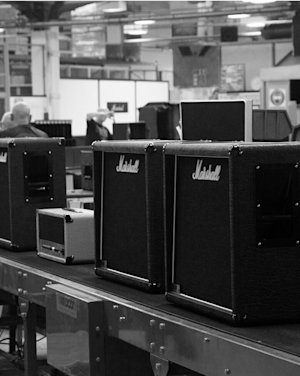Inside the factory
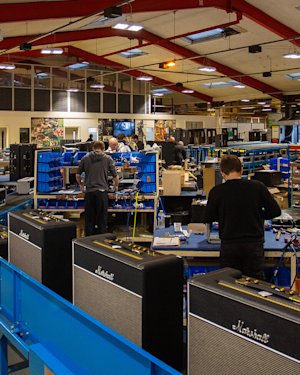
From raw materials to legendary roar
For over 60 years, Marshall has shaped the sound of rock ’n’ roll. It all started in 1962, when Jim and Terry Marshall built their first amp in Hanwell, London. As demand exploded, we moved to Bletchley in the late ’60s—where our factory still stands today. We’ve never stopped pushing boundaries, crafting legendary sound with iconic design. And we’re just getting started.
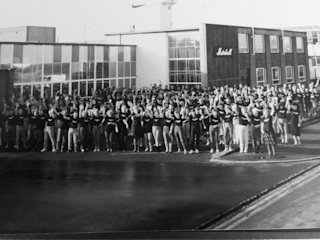
Marshall employees outside the Bletchley factory in the 1980s
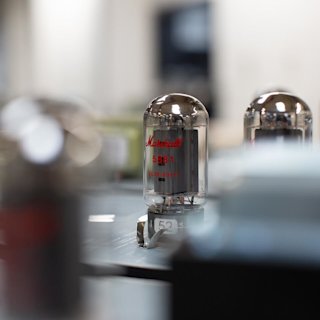
Research and development
From the inner circuitry to the perfect speakers, all our amps are designed from the ground up right here in Bletchley. Once the prototype is thoroughly tested to ensure both the sound, looks and quality are the very best they can be, it’s given the green light to go into production. All our staff are trained in house to work to the highest standard.
Woodmill
Once research and development have confirmed the design of the amp, the product drawings are passed to Woodmill to create the wooden structure of the amp. This includes the outer enclosure and, where fitted, the baffles. All wood is cut and fit to size, assembled and then sanded down, ready for the covering department.
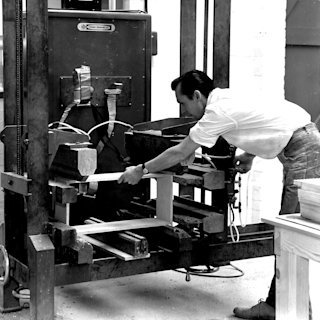
1960s woodmill
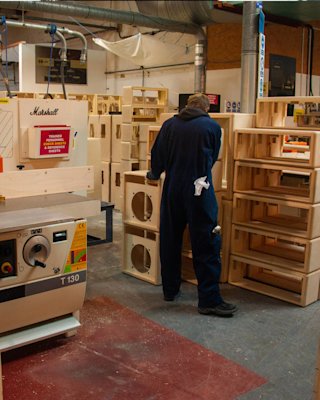
Modern woodmill
Engineering
Each amp chassis needs to safely house a range of electronics and valves. The engineering department stamp, cut and bend sheet metal to perfectly fit each internal component. The completed chassis is then reinforced for added strength, ready for anything a hard-working musician can throw at it.
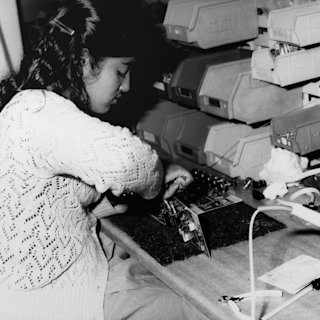
1980s electronics
Electronics
Some amps contain PCBs which are automatically populated with up to 6 components a second. Other amps are carefully wired by hand, using the same tried and tested construction methods that were used in 1962. The boards are put into the chassis, wired-up and tested. At this point the panels, switches, transformers and valve bases are also added by hand.
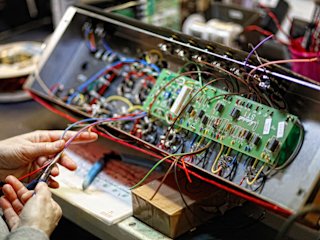
Modern electronics
Covering
The sanded wooden enclosure is placed on a carousel before being sprayed with paint and glue. From here the covering is cut to size and sprayed with glue before being expertly wrapped around the unit. Whether it’s classic elephant grain or timeless levant, adding the covering is where the product starts to become recognisable as one of our iconic amps.
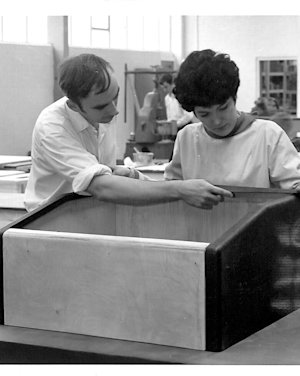
1960s covering
Assembly / Finishing
This is the point where the amp takes shape and is assembled into the final product. The chassis, speakers and internal electronics are expertly fastened to the unit. The baffle is covered with the fret cloth and the corners, handles and other finishing touches are added.
Testing
Each part is repeatedly tested during the manufacturing process, but once assembled the finished amp is given a thorough going over. From passing through a specially designed test machine to our experienced tester plugging a guitar in, every detail on every unit is checked to ensure it meets our original specification. Our reliability and build quality are key reasons as to why our amps stand the test of time.
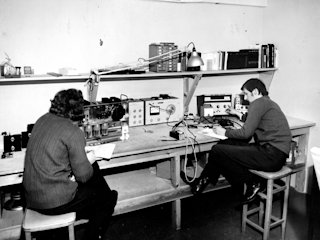
1970s testing
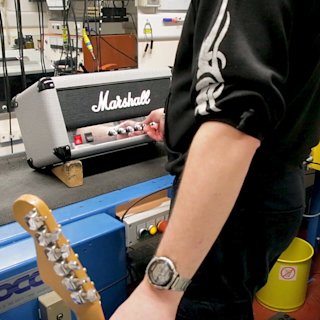
Modern testing
Packing / Warehouse
Once it’s ready the finished amp and its accessories are carefully packaged up. The box is then prepared to be transported to music stores around the world, ready to be used by more guitarists in the Marshall family.
And that’s how our amps are made!
Our Bletchley factory is home to the entire journey our handwired amps go through, from ideas to game-changing amps. Bletchley also provided the blueprint for our Vietnam factory, which is an exact replica. Having these two factories allows us to create products across the world, all of which must meet the same high standards first set out in the 1960s.
